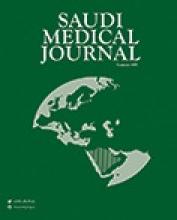Abstract
OBJECTIVE: To compare the differences between glycosylated and non-glycosylated granulocyte colony-stimulating factor (G-CSF) on mobilizing cell regeneration of bone marrow stem cells and repairing injured myocardium.
METHODS: In the acute myocardial ischemia model, 40 Sprague-Dawley rats (8 weeks old, weight 200-250 g) were successfully established with isoproteronol (ISO) and randomly and evenly divided into 4 groups: Group G (injected with glycosylated G-CSF), Group N (non-glycosylated G-CSF), Group C ([control] normal saline for 7 days), and Group M (model). At day 5, all rats were labeled with bromodeoxyuridine (BrdU). At day 28, the proportion of CD34+ cells, myocardial BrdU immunohistochemical stain, myocardial capillary density, myocardial fibrosis and cardiac function was detected among the 3 groups. The study was carried out at the Central Laboratory, Tongji Hospital of Tongji University, Shanghai, China between 1 July 2009 and 31 July 2009.
RESULTS: In Group G, the proportion of CD34+ cells and cardiac function was significantly higher than groups N and C, and BrdU positive cells in myocardium were higher than those other groups. Diaminobenzidine stained positive cells in striated muscle tissue possessed more cardiocyte-like structure, higher myocardial capillary density, and less myocardial fibrosis in group G compared with other 2 groups.
CONCLUSION: Glycosytated G-CSF might possess stronger capability to mobilize cell regeneration of bone marrow stem cells and repair injured myocardium.
- Copyright: © Saudi Medical Journal
This is an open-access article distributed under the terms of the Creative Commons Attribution-Noncommercial-Share Alike 3.0 Unported, which permits unrestricted use, distribution, and reproduction in any medium, provided the original work is properly cited.






